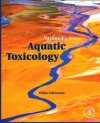About this book
An Introduction to Aquatic Toxicology is an introductory reference for all aspects of toxicology pertaining to aquatic environments. As water sources diminish, the need to understand the effects that contaminants may have on aquatic organisms and ecosystems increases in importance. This book will provide you with a solid understanding of aquatic toxicology, its past, its cutting-edge present and its likely future. An Introduction to Aquatic Toxicology will introduce you to the global issue of aquatic contamination, detailing the major sources of contamination, from where they originate, and their effects on aquatic organisms and their environment. State-of-the-art toxicological topics covered include nanotoxicology, toxicogenomics, bioinformatics, transcriptomics, metabolomics, as well as water management and the toxicological effects of major environmental issues such as algal blooms, climate change and ocean acidification. This book is intended for anyone who wants to know more about the impact of toxicants on aquatic organisms and ecosystems, or to keep up to date with recent and future developments in the field.
Contents
Preface
- Introduction: What is Aquatic Toxicology?
- What is Causing Aquatic Contamination?
- Principles of Water Purification
- Sources and Transport of Chemicals in Aquatic Systems
- The Most Important Experimental Designs and Organisms in Aquatic Toxicology
- Factors Affecting the Bioavailability of Chemicals
- Chemical Uptake of Organisms
- Chemical Distribution in Organisms
- Detoxification
- Excretion of Compounds from Organisms
- Effects on Organisms
- Bioindicators and Biomarkers
- Interactions Between Chemicals
- Acute and Chronic Toxicity
- Interactions Between Natural Environmental Factors and Toxicity
- Effects of Chemicals on Aquatic Populations
- Effects of Chemicals on Aquatic Communities and Ecosystems
- Modeling Toxicity
Glossary
Customer Reviews
Biography
Mikko Nikinmaa got his high school diploma (International Baccalaureate) from the United World College of the Atlantic, Llantwit Major, U.K. His university education including the Ph. D. degree he accomplished at University of Helsinki, Finland. He did postdoctoral work in Odense University, Denmark, and Stanford University, USA. Thereafter he worked in the University of Helsinki with research visits to University of British Columbia, Vancouver, and Dalhousie University, Halifax, Nova Scotia. In 1995 he was appointed Professor of Zoology in the University of Turku. He was the President of Scandinavian Physiological Society in 1994-1996, and a member of National Research Council of Environment and Natural Resources in 1995-1997. He served as a Dean of the Faculty of Mathematics and Natural Sciences in 2000-2004, and was the director of the Center of Excellence in Evolutionary Genetics and Physiology (appointed by the Academy of Finland) in 2006-2011. He has been chief editor of Aquatic Toxicology since 2004 and subject (respiratory and comparative physiology) editor of Acta Physiologica since 1997. Presently he is editorial board member in four journals. His approximately 200 publications include a book on Vertebrate Red Blood Cells published by Springer and a review on Membrane Transport and the Control of Haemoglobin Oxygen Affinity in Physiological Reviews. He has reviewed grant applications to agencies from more than ten different countries, and served as an evaluator of academic positions in USA, Canada, U.K., Sweden, South Africa and Finland. More than 30 journals have used him as peer reviewer. His research interests lie in how environmental changes, particularly temperature, oxygen and toxicants, affect cellular functions especially in fish. An important aspect of research is environmental regulation of gene expression, for example how toxicants, oxygen and temperature changes affect transcription, translation and protein stability.



































